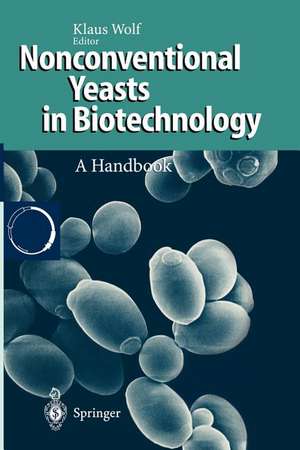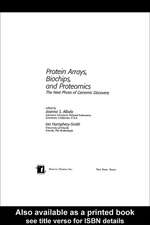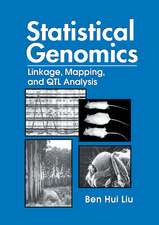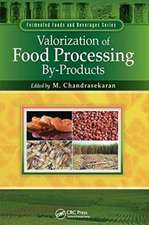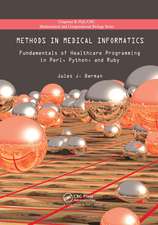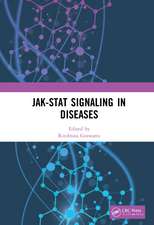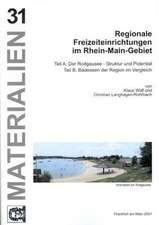Nonconventional Yeasts in Biotechnology: A Handbook
Autor Klaus Wolfen Limba Engleză Paperback – 11 ian 2012
This book is the first to extensively cover nonconventional yeasts. In addition to useful background information detailed protocols are included, allowing investigation of basic and applied aspects of a wide range of nonconventional yeast species.
Preț: 408.16 lei
Nou
Puncte Express: 612
Preț estimativ în valută:
78.14€ • 81.53$ • 65.50£
78.14€ • 81.53$ • 65.50£
Carte tipărită la comandă
Livrare economică 13-27 martie
Preluare comenzi: 021 569.72.76
Specificații
ISBN-13: 9783642798580
ISBN-10: 3642798586
Pagini: 644
Ilustrații: XXII, 619 p.
Dimensiuni: 155 x 235 x 34 mm
Greutate: 0.89 kg
Ediția:Softcover reprint of the original 1st ed. 1996
Editura: Springer Berlin, Heidelberg
Colecția Springer
Locul publicării:Berlin, Heidelberg, Germany
ISBN-10: 3642798586
Pagini: 644
Ilustrații: XXII, 619 p.
Dimensiuni: 155 x 235 x 34 mm
Greutate: 0.89 kg
Ediția:Softcover reprint of the original 1st ed. 1996
Editura: Springer Berlin, Heidelberg
Colecția Springer
Locul publicării:Berlin, Heidelberg, Germany
Public țintă
ResearchCuprins
1 Principles and Methods Used in Yeast Classification, and an Overview of Currently Accepted Yeast Genera.- 1 Introduction.- 2 Some Principles of Yeast Taxonomy.- 3 Trends in the Systematics of Yeasts.- 4 Phylogeny.- 5 Methods.- 6 Overview of Yeast Genera.- 7 Appendix.- References.- 2 Protoplast Fusion of Yeasts.- 1 Introduction.- 2 Transfer of Cytoplasmic Genes.- 3 Production of Polyploid Strains.- 4 Fusion of Strains with Identical Mating Type.- 5 Establishment of Parasexual Genetic Systems.- 6 Fusion of Strains Belonging to Different Species or Genera.- 7 Practical Recommendations.- 8 Analysis of the Fusants.- 9 Additional Protocols.- 10 Concluding Remarks.- References.- 3 Electrophoretic Karyotyping of Yeasts.- 1 Introduction and Theory.- 2 Fields of Application.- 3 Practical Recommendations.- References.- 4 Schwanniomyces occidentalis.- 1 History of Schwanniomyces occidentalis Research.- 2 Physiology.- 3 Media.- 4 Available Strains.- 5 Genetic Techniques.- 6 Chromosomal DNA.- 7 Genes and Genetic Markers.- 8 Vector Systems.- 9 Heterologous Gene Expression.- 10 The Amylolytic System.- 11 Industrial Applications.- References.- 5 Kluyveromyces lactis.- 1 History of Kluyveromyces lactis Research.- 2 Physiology.- 3 Growth Media.- 4 Available Strains.- 5 Genetic Techniques.- 6 Chromosomal DNA.- 7 Genes and Genetic Markers.- 8 K. lactis Genes vs. S. cerevisiae Genes.- 9 Regulation of Carbon Metabolism.- 10 Mitochondria.- 11 A Few Notes on Biochemical Procedures.- 12 Plasmids.- 13 Vector Systems.- 14 Transformation Procedures.- 15 K. lactis for Industrial Application.- References.- 6 Pichia pastoris.- 1 History of Pichia pastoris.- 2 Growth and Storage.- 3 Available Strains.- 4 Genetic Techniques.- 5 Fermentation Process.- 6 Transformation.- 7 Induction of Protein Expression.- 8 Analysis of Protein Expression.- 9 Vectors.- 10 Optimization of Protein Expression.- 11 Miscellaneous Procedures.- References.- 7 Pichia guilliermondii.- 1 History of Pichia guilliermondii Research.- 2 Physiology.- 3 Available Strains.- 4 Genetic Techniques.- 5 Chromosomes, Genes, and Genetic Markers.- 6 DNA Isolation and Transformation.- 7 Biochemical Genetics.- 8 Biotechnological Applications.- 9 Concluding Remarks.- References.- 8 Pichia methanolica (Pichia pinus MH4).- 1 History of Pichia methanolica Research.- 2 Physiology.- 3 Available Strains.- 4 Genetic Techniques.- 5 Chromosomes.- 6 Genes and Genetic Markers.- 7 Transformation.- 8 Genetic Control of Mating.- 9 Biochemical Genetics of Purine Biosynthesis.- 10 Genetic Control of Methanol Metabolism.- 11 Biotechnological Applications.- References.- 9 Hansenula polymorpha (Pichia angusta).- 1 History of Hansenula polymorpha Research.- 2 Physiology.- 3 Media.- 4 Available Strains.- 5 Genetic Techniques.- 6 Chromosomes.- 7 Genes and Genetic Markers.- 8 Vector Systems.- 9 Heterologous Gene Expression.- 10 Peroxisomal Biogenesis.- 11 Applied Aspects.- 12 Concluding Remarks.- References.- 10 Yarrowia lipolytica.- 1 History of Yarrowia lipolytica Research.- 2 Physiology/Biochemistry/Cell Structure.- 3 Life Cycle.- 4 Genetic and Molecular Data.- 5 Transformation, Vectors, and Expression Systems.- 6 Media and Culture Conditions.- 7 Genetic Techniques.- 8 Methods of Cell Biology (Structural Studies).- 9 Methods of Molecular Biology/Gene Technology.- References.- 11 Arxula adeninivorans.- 1 History of Arxula adeninivorans Research.- 2 Physiology and Biochemical Procedures.- 3 Growth Media.- 4 Available Strains and Preservation Methods.- 5 Parasexual Genetics.- 6 Chromosomal DNA.- 7 Mitochondrial DNA.- 8 TransformationSystem.- 9 Expression of Heterologous Genes in A. adeninivorans.- References.- 12 Candida maltosa.- 1 History and Taxonomy of Candida maltosa.- 2 Physiology and Biochemistry of Candida maltosa.- 3 Cytology and Morphology of Candida maltosa.- 4 Genetics and Molecular Biology of Candida maltosa.- 5 Host-Vector Systems for Candida maltosa.- 6 Potential Biotechnological Application of Candida maltosa.- References.- 13 Trichosporon.- 1 History of Trichosporon Research.- 2 Available Strains and Mutant Collections.- 3 Media for Different Purposes.- 4 Conservation of Strains.- 5 Genetic Techniques.- 6 Biochemical Techniques.- 7 Molecular Techniques.- 8 Specific Biochemical Properties of Trichosporon Yeasts.- 9 Trichosporon Cell Biology: Staining of Nuclei.- 10 Applications of Trichosporon Yeasts.- References.
Textul de pe ultima copertă
Nonconventional yeasts - all yeasts other than S. cerevisiae and S. pombe - are attracting increasing attention in basic research and biotechnological applications. Due to their exceptional metabolic pathways, they have been used in various biotechnological processes for producing foods or food additives, drugs or a variety of biochemicals. This book is the first to extensively cover nonconventional yeasts. In addition to useful background information detailed protocols are included, allowing investigation of basic and applied aspects of a wide range of nonconventional yeast species.
